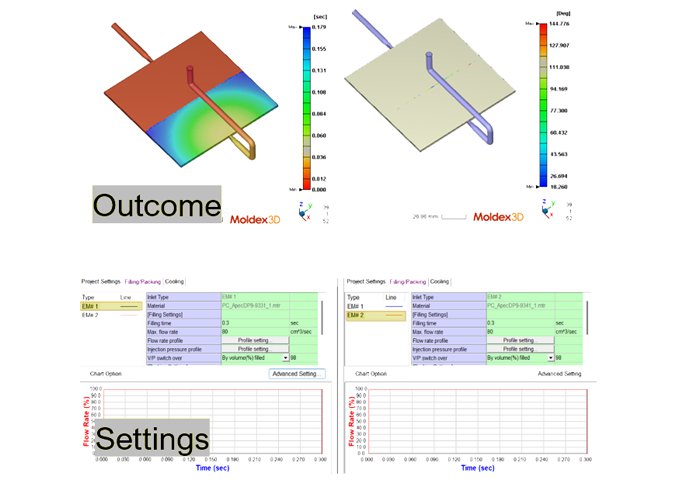
Bi-injection
ESPECIALLY FOR OUR USERS
The goal of a two-component injection molding process is to develop plastic parts that are not only functional but also have a flawless appearance. By combining two materials into a single part this process creates new possibilities for functionality including stiffness versus flexibility, transparency versus color, and insulation versus haptical feeling. However, this promise comes with real technical complexity. How can adhesion between the materials be ensured? How can interface errors be avoided? How can different shrinkage and deformation be controlled? This is exactly where Moldex3D comes in.
Through simulation, Moldex3D users can visualize, predict, and correct every stage of the process even before the first mold test is performed. This means greater precision, speed, and reliability from design to validation.
Moldex3D is a powerful tool that allows you to anticipate risks, adjust your design, and validate your choice of materials or process parameters before physical manufacturing. With the bi-injection module, you can define a precise injection sequence, select materials for each phase, and define independent injection points and the corresponding cycle parameters, such as pressure, injection time, and temperature.
Setting up a two-component injection molding simulation begins with creating a CAD model. This model must contain one or two volumes representing the materials that will be injected, either sequentially or simultaneously.
Before submitting the calculation, it is crucial to create a high-quality volume mesh for the simulation model. Moldex3D's integrated BLM meshing technology provides a volume mesh consisting of 11 element layers, which is sufficient to ensure accurate results within the study. Next, the process parameters and Moldex3D solvers must be defined.
Once the simulation is complete Moldex3D provides important results including the filling pattern, temperature, possible weld line occurrence, internal stresses and part deformation predictions, such as shrinkage. These results can be used to evaluate the quality of the bond between materials, detect potential defects and test multiple injection molding scenarios or material combinations virtually. A “biinject license” is required for this module.
Please contact us for more information!
